15 Incredible Things to Do in Aswan, Egypt
If you’re planning a trip to Egypt, then make sure to head to Aswan. This complete guide to the 15 best things to do in Aswan will help you plan your trip perfectly.
Aswan is a beautiful city located along the Nile River, and it is home to some very interesting places to visit! Out of all the cities we visited in Egypt, Aswan was, perhaps, my favorite.
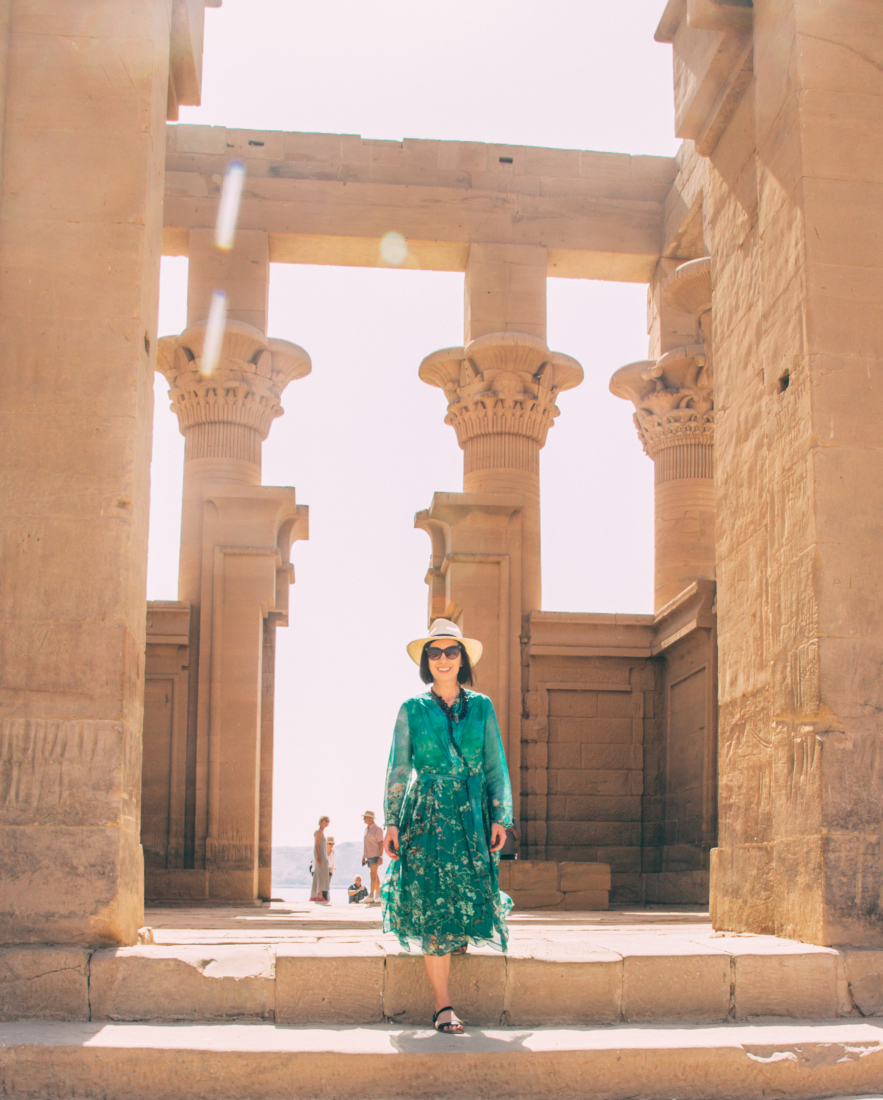
It was quite clean and modern and traffic was not as horrifically crazy as it was in most of Egypt. I really enjoyed the 2 days we had here! If you have seven days in Egypt, I highly recommend visiting Aswan along with Cairo, Luxor, and Abu Simbel.
In ancient Egypt, Luxor was known as Thebes and served as the capital of the New Kingdom. Aswan, or Swenett, was Pharaonic Egypt’s southern frontier near the border of Sudan, which was then known as Medjay.
Many of the ancient statues and temples we see today were made in Aswan’s quarries, including Philae in Aswan and the obelisks in Luxor’s temples.
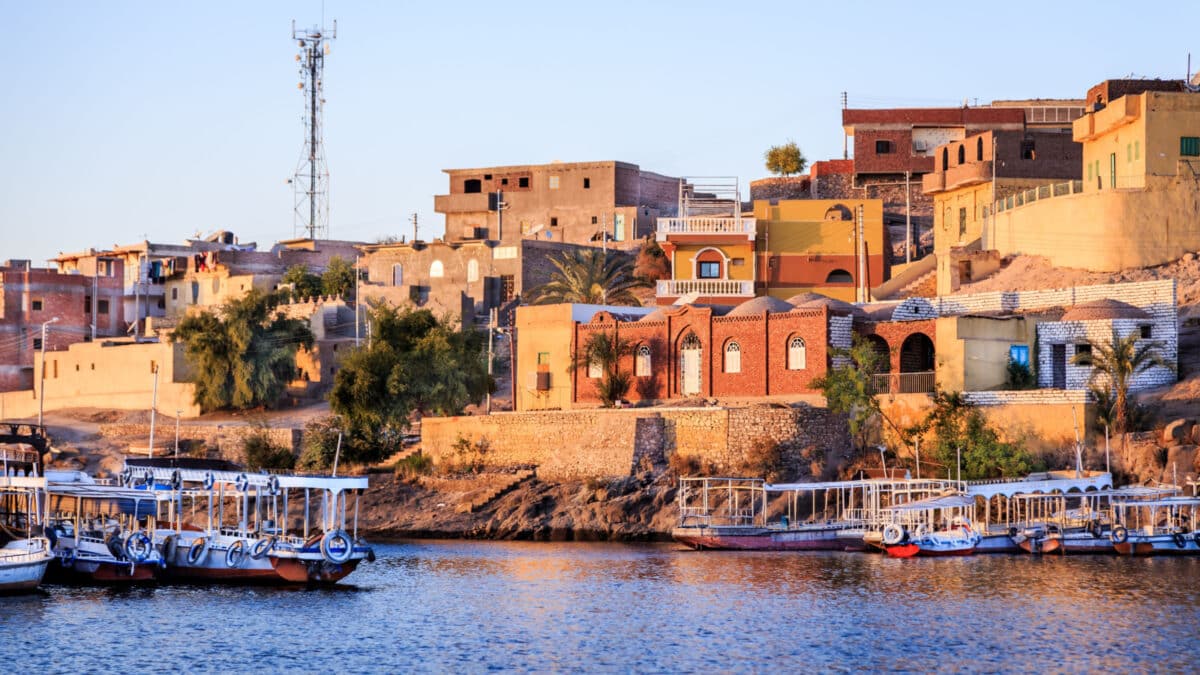
Today, modern Aswan is also a thriving city thanks to the Sudanese trade and is well-known for the challenging construction of the Aswan High Dam. This was critical in preventing the annual Nile floods from wreaking havoc on the city.
When you consider that you can visit Abu Simbel from Aswan, it’s the ideal place to base yourself for a few days of travel. What more could you want? History, culture, and shopping!
This list is not a complete list of EVERYTHING you can possibly do in Aswan, this is my personal list. A couple of these things I did not have time to do, but I do feel they are worth mentioning (as I would, honestly, like to go back and visit them myself)! Enjoy!
The 5 Best Things To Do in Aswan, Egypt
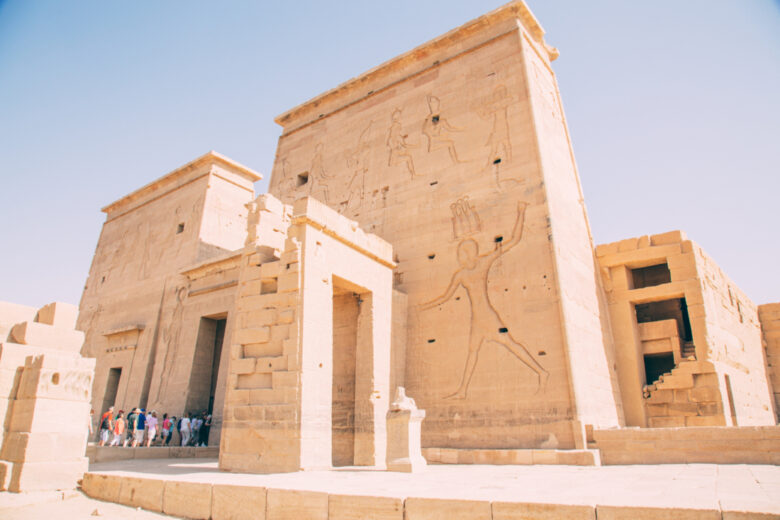
1. Explore the Temple of Isis (Philae Temple)
The Temple of Isis is actually located on an island. It was built to honor the goddess Isis back in 690 BC.
Interestingly enough, this is not the island where the temple was originally built. Before the Aswan High Dam was built back in the 1960s, a massive UNESCO project moved the temple to higher ground. It would have been completely underwater otherwise once the dam was completed!
The walls of Philae Temple, which was dedicated to the goddess Isis, are adorned with murals depicting various events from her life, such as the birth of her son Horus or the mummification of her husband Osiris.
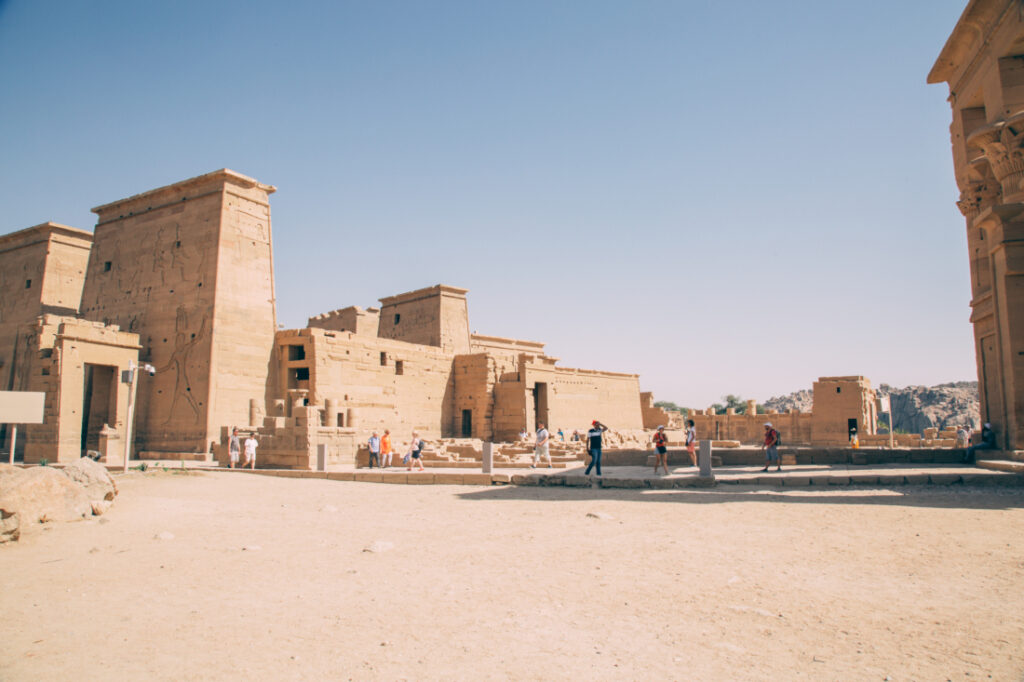
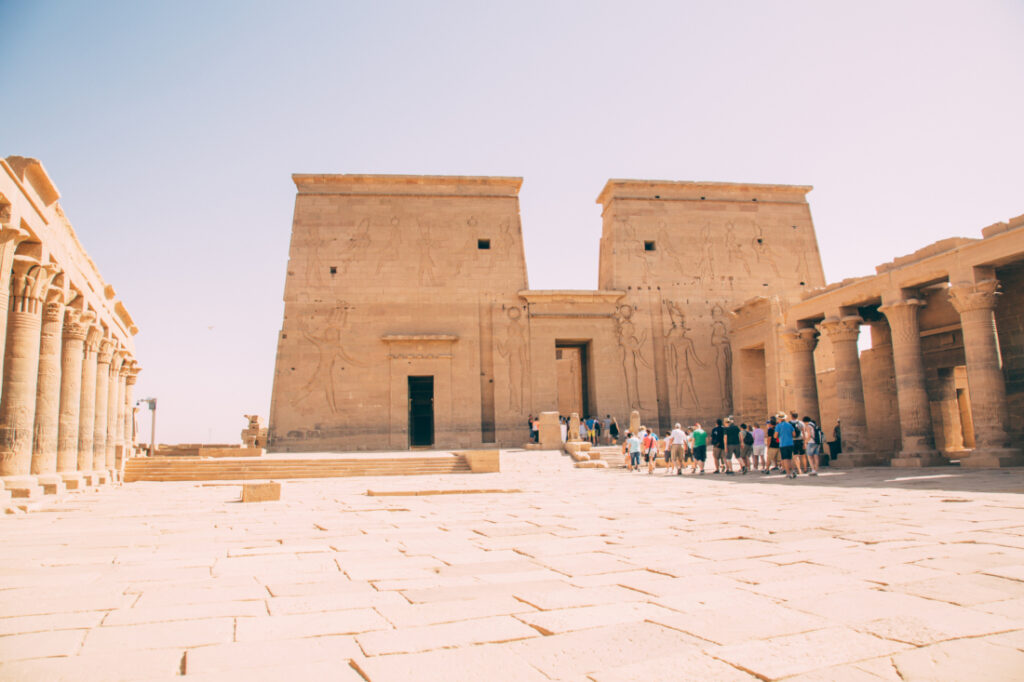
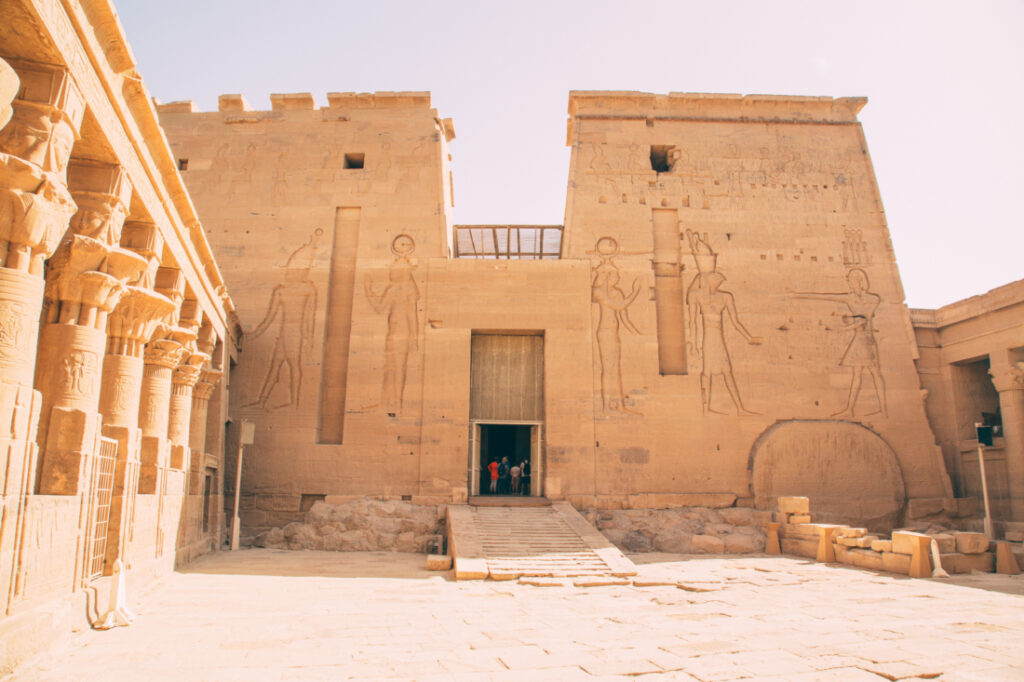
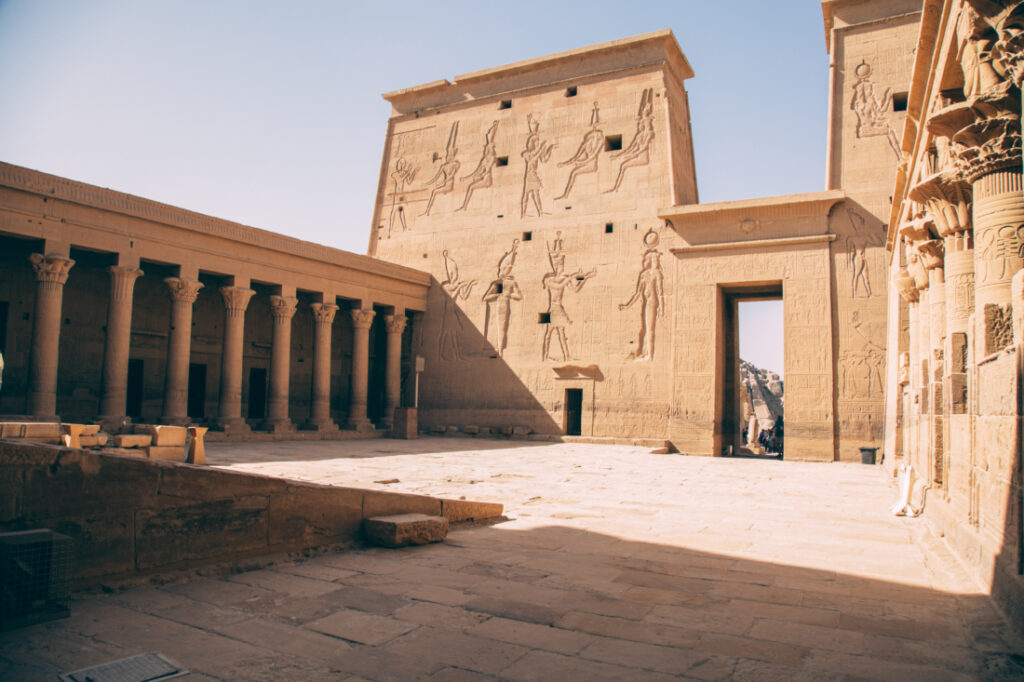
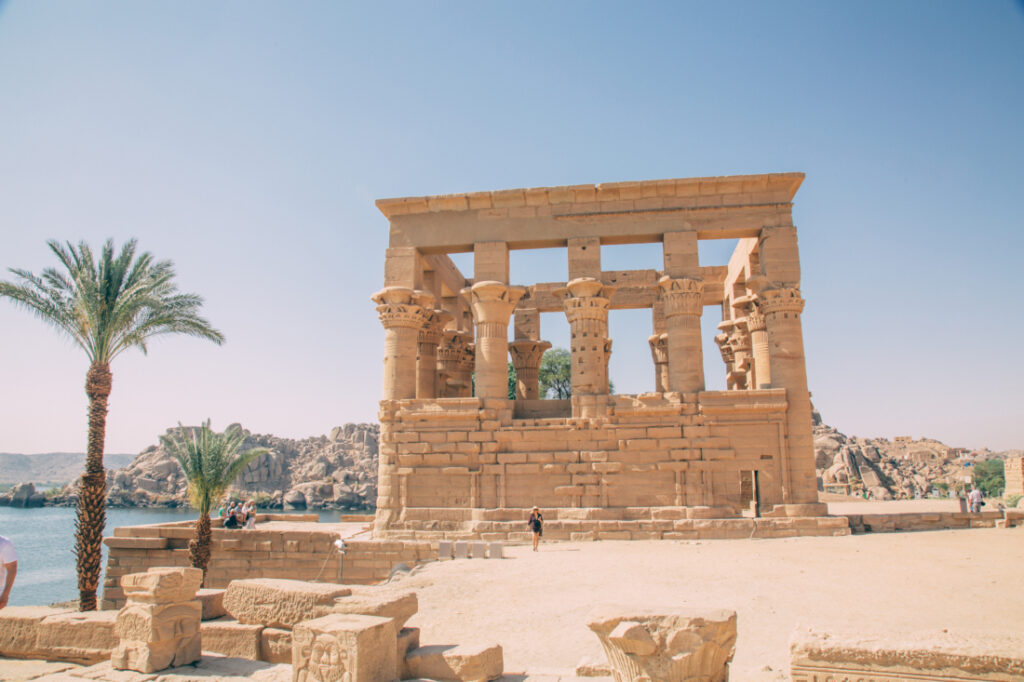
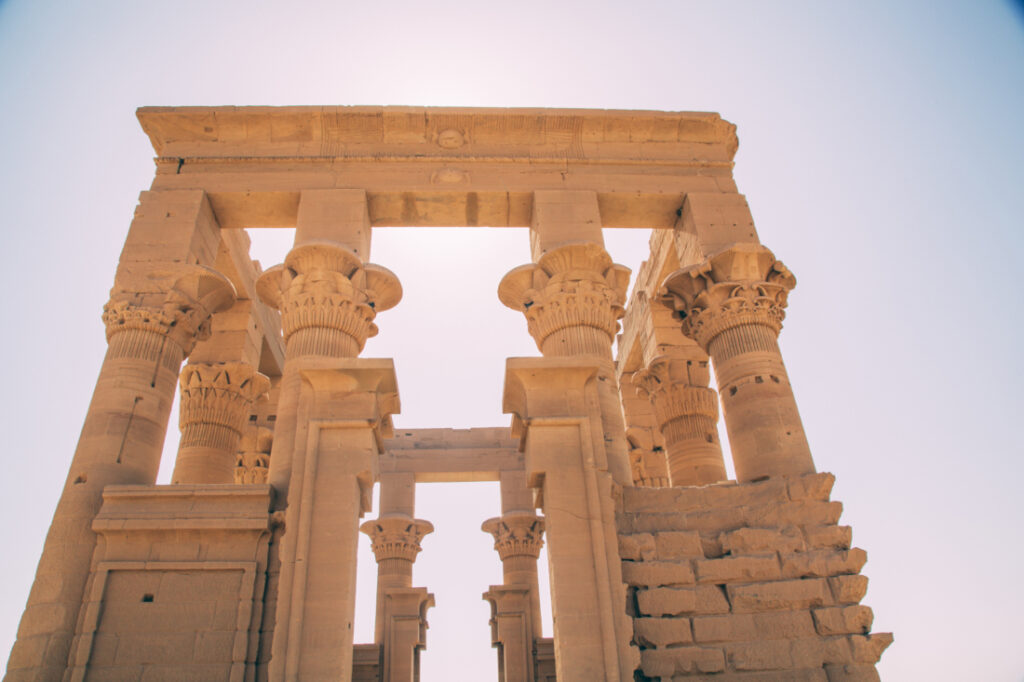
As Christianity spread in Egypt, the Philae Temple was turned into a church by the first Christians. As a result, they tried to erase some of the Ancient Egyptian wall imagery and inscriptions. For this reason, it even has an altar in it along with crosses etched over the hieroglyphics.
We were also told many of the gods’ feet were defaced because the Christians thought they could hear the gods walking through the temple at night while they were sleeping.
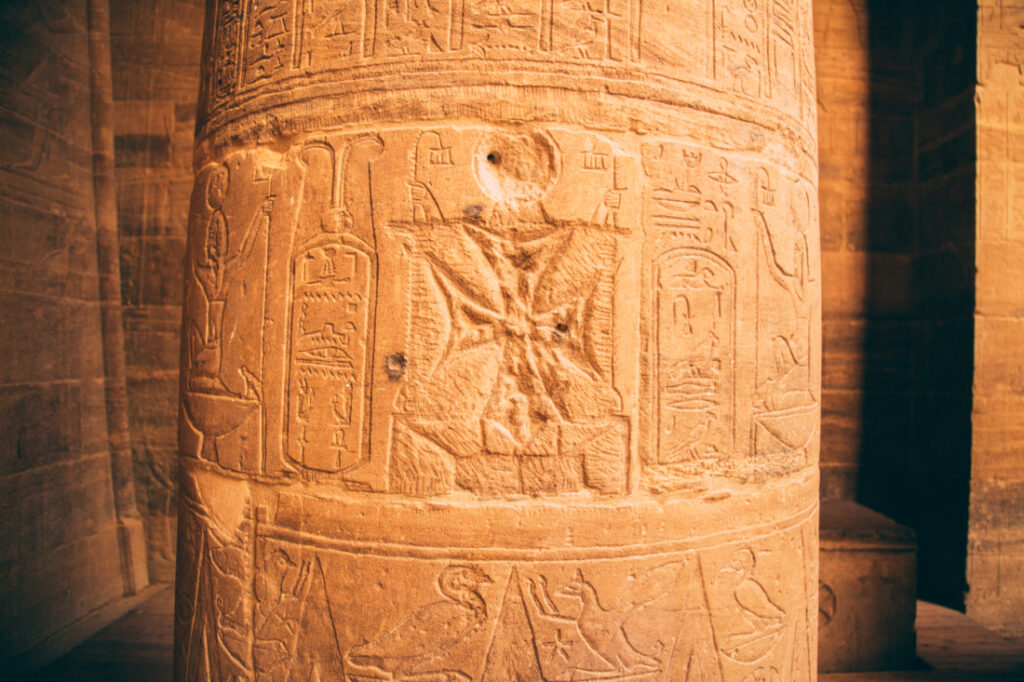
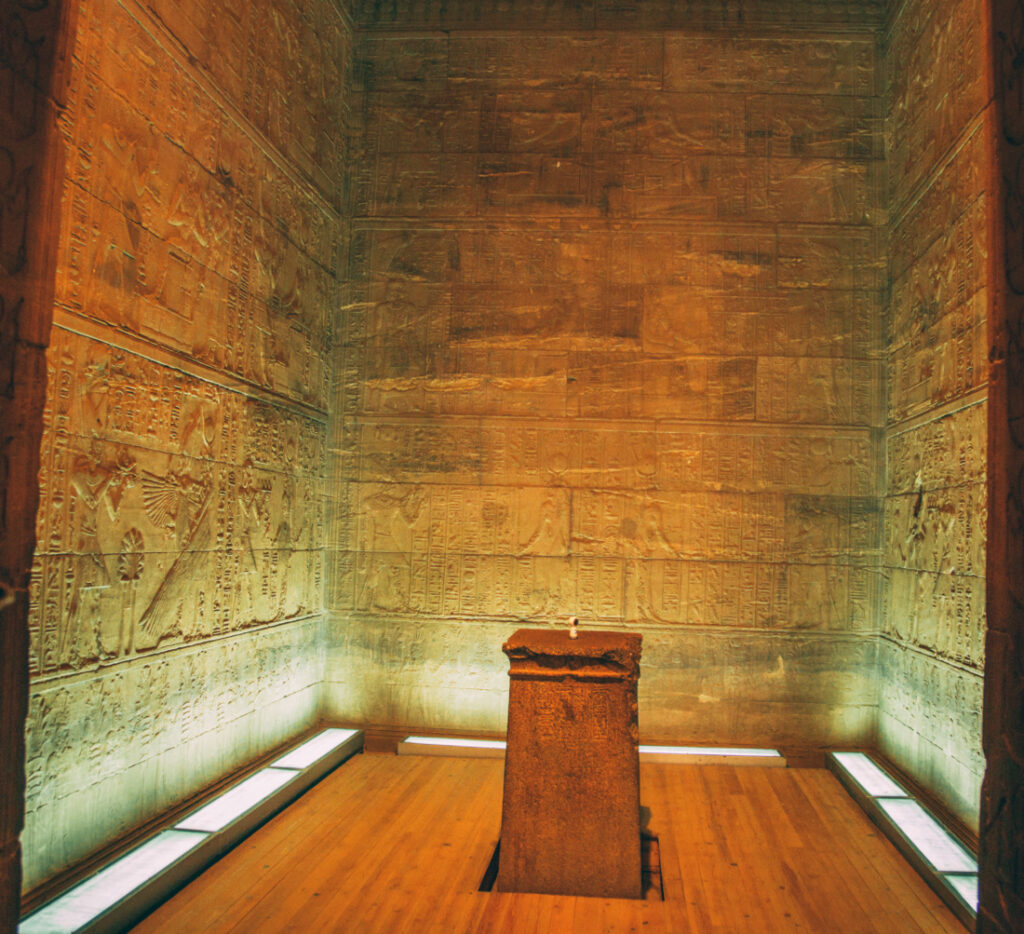
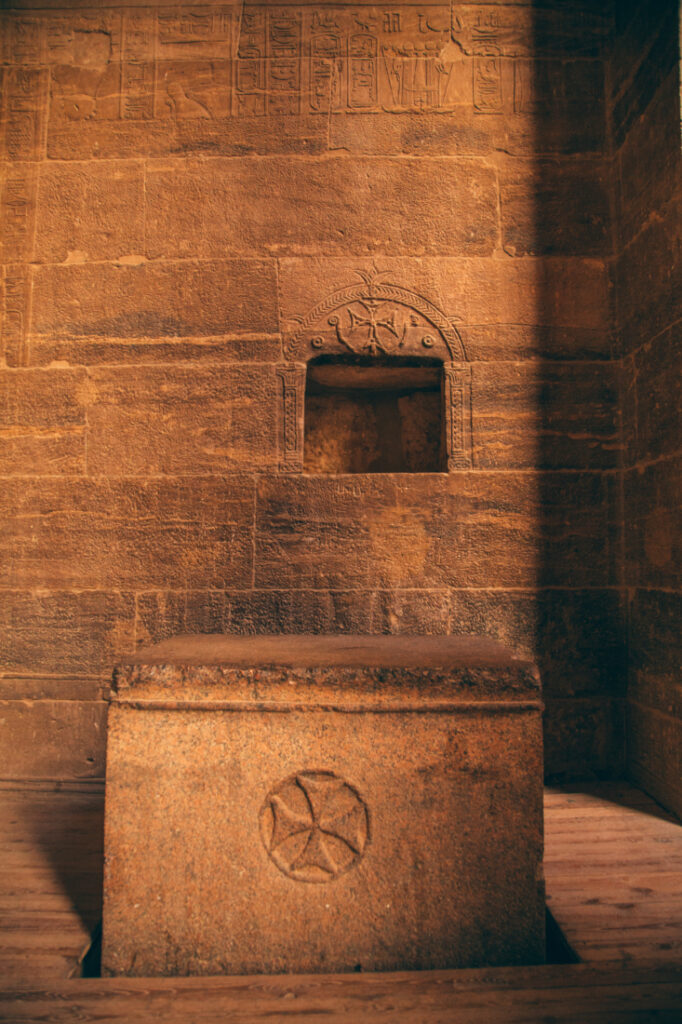
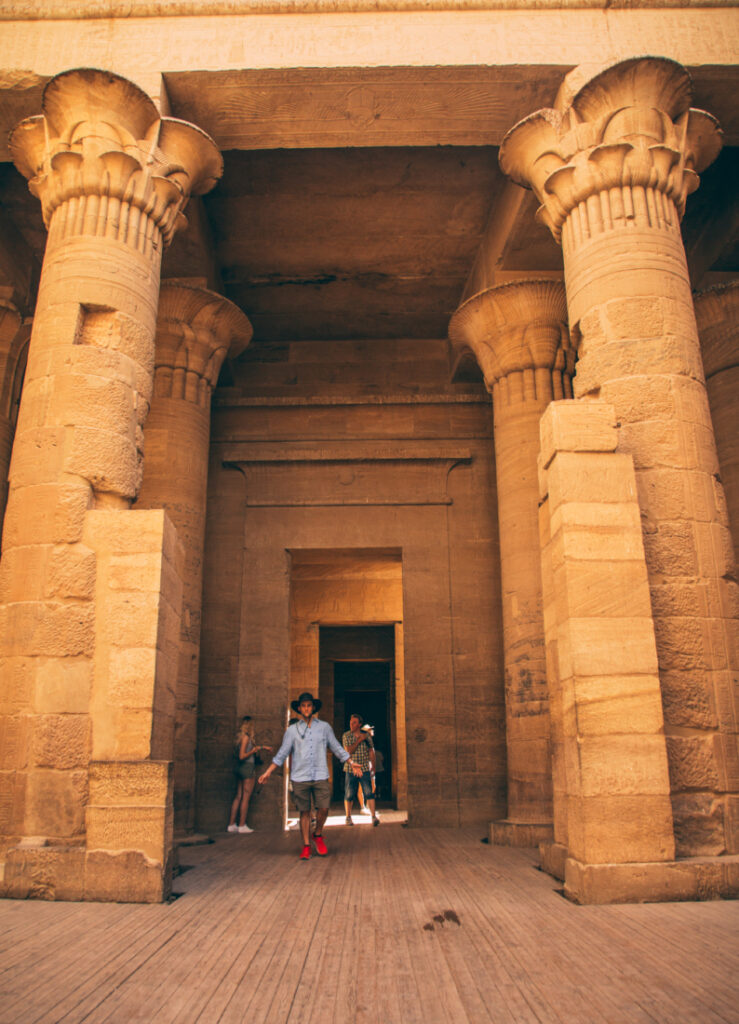
Out of all the sound and light shows at night in Egypt, the light show at Philae Temple is considered to be the best. If that’s something you’re interested in, I highly recommend checking it out too!
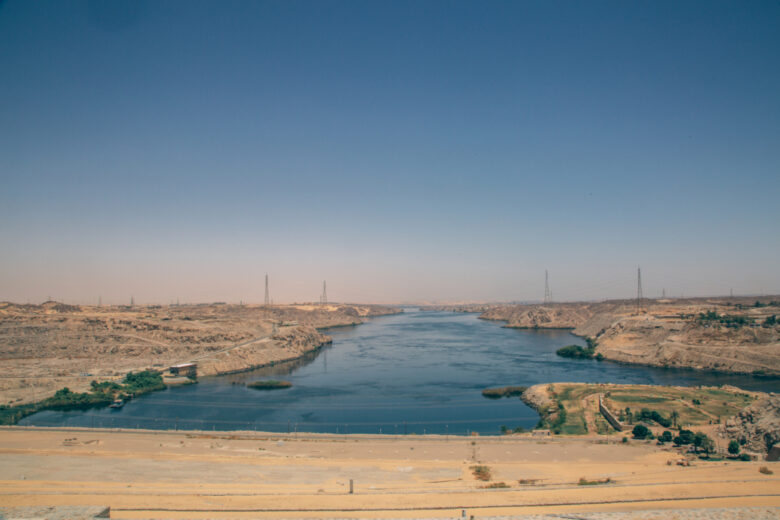
2. Visit the High Dam
Speaking of the High Dam, you can also go to it yourself! The Aswan Dam was built to prevent flooding on the Nile and to provide a consistent source of water for irrigation to support local crops. The Aswan Dam was built in 1970 thanks to Soviet Union funding.
While we don’t know the precise number of people hired to complete the building, it was most likely over 35,000 during the peak of development.
Certain archeological monuments were shifted to various sites during dam building to prevent the risk of being inundated by water!
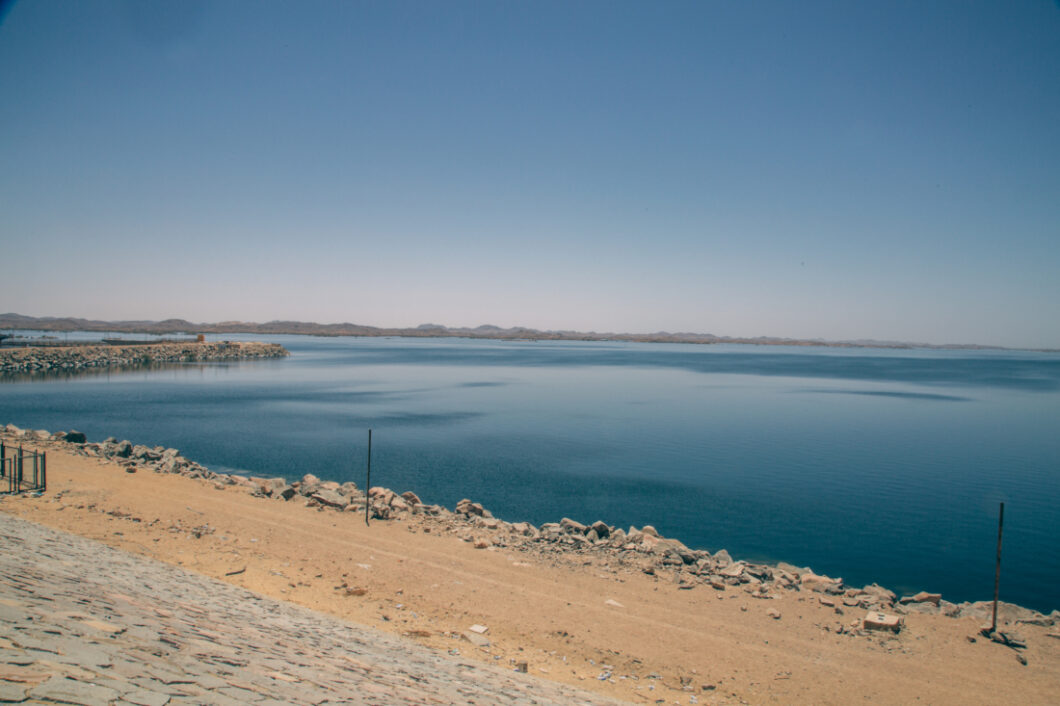
The Aswan Dam resulted in the formation of Lake Nasser, a water reservoir. Lake Nasser is one of the world’s largest man-made reservoirs, stretching an incredible 341 miles! While there are few crocodiles along the Nile these days, Lake Nasser is thought to have an increasing crocodile population.
The Aswan Dam is critical to Egypt because it generates a considerable amount of hydroelectricity, which powers millions of Egyptians.
It is well worth a visit to appreciate the scope and significance of this engineering project. From the High Dam, you can see the lovely waters of Lake Nasser and maybe even glimpse some local birds like herons or eagles.
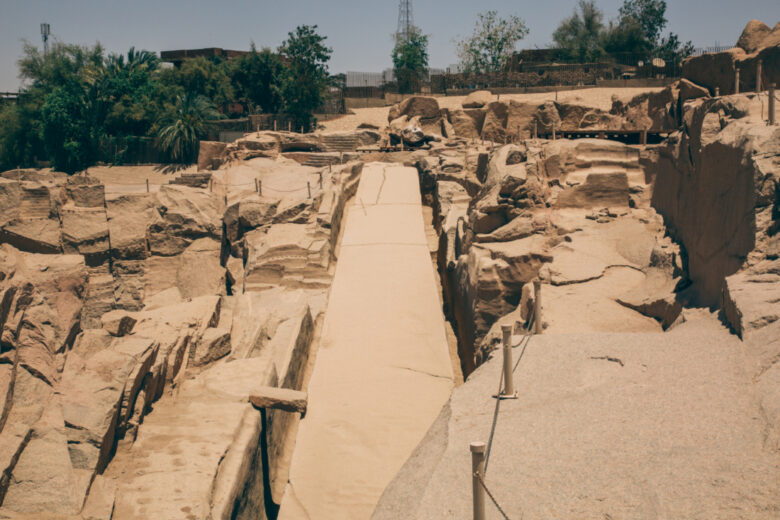
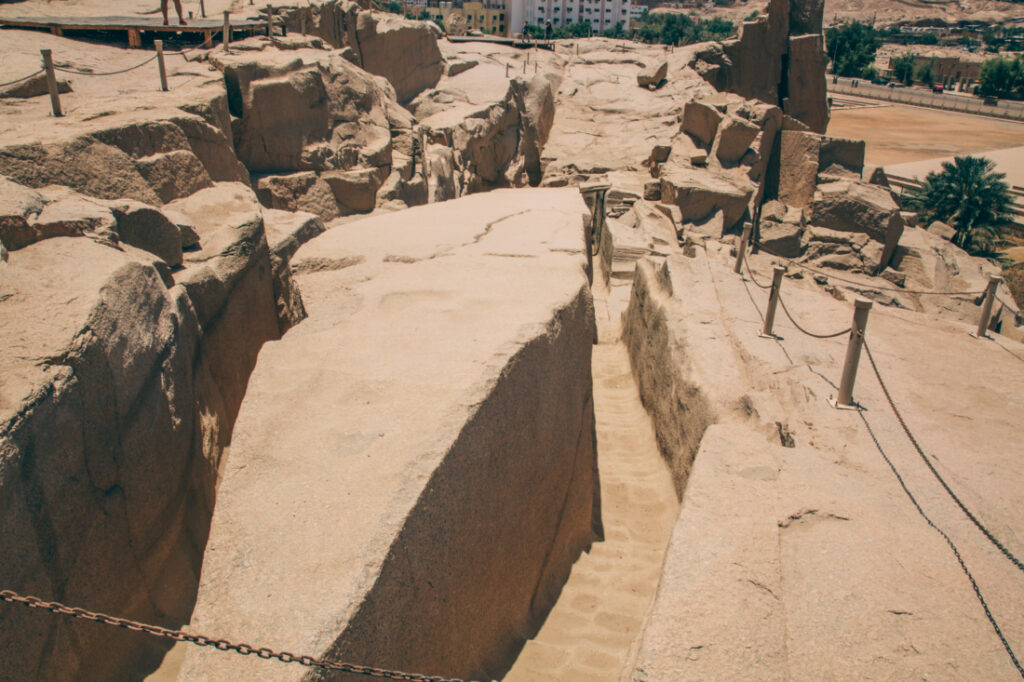
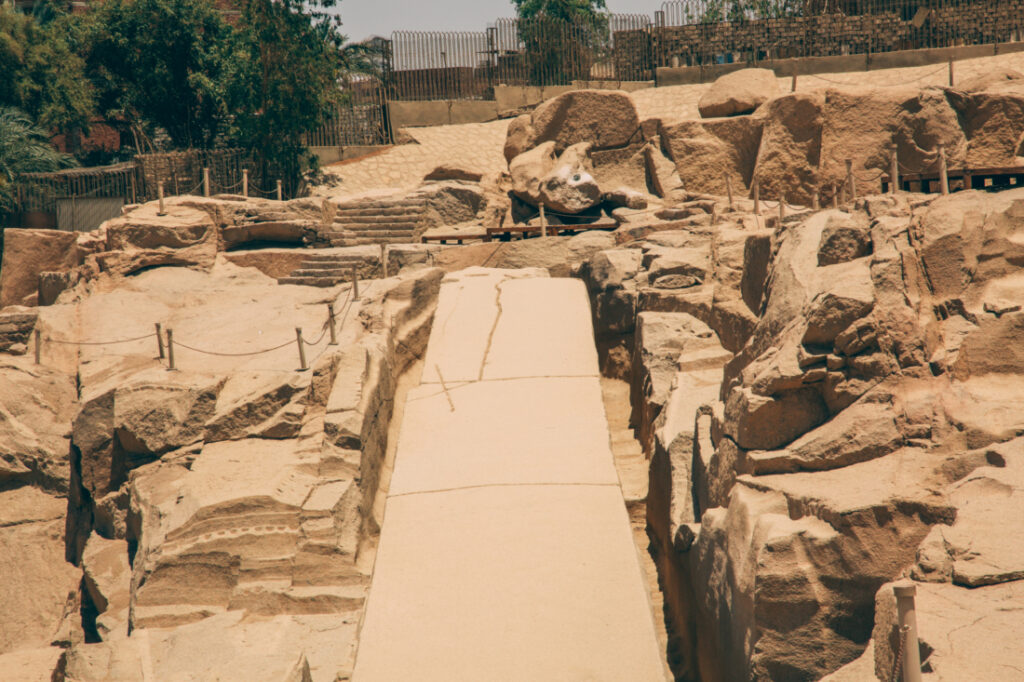
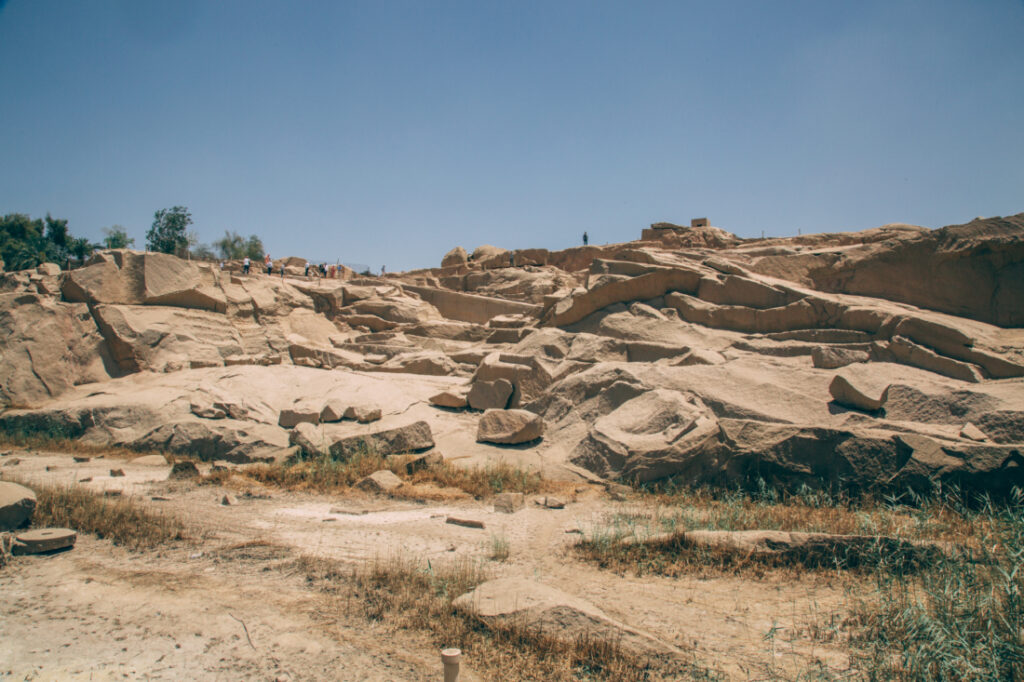
3. See the Unfinished Obelisk
One of the best things to do in Aswan is to visit one of these quarries to see the Unfinished Obelisk, which is the largest known ancient obelisk! Its creation was ordered by Queen Hatshepsut (remember her from my post on the Valley of the Kings?).
It was carved directly out of bedrock, but the granite cracked. So, they left the obelisk where it was, and now you can see how the Egyptians made their obelisks. It’s really cool to see!
If you’re wondering why an unfinished obelisk, of all things, would be interested to check out, then just trust me on this one. Many people debate whether or not to go there but once you see this enormous obelisk laying in the ground, it’ll all make sense.
It really makes you appreciate what a massive task it would have been for ancient Egyptians to cut these out of stone and move them to their final location.
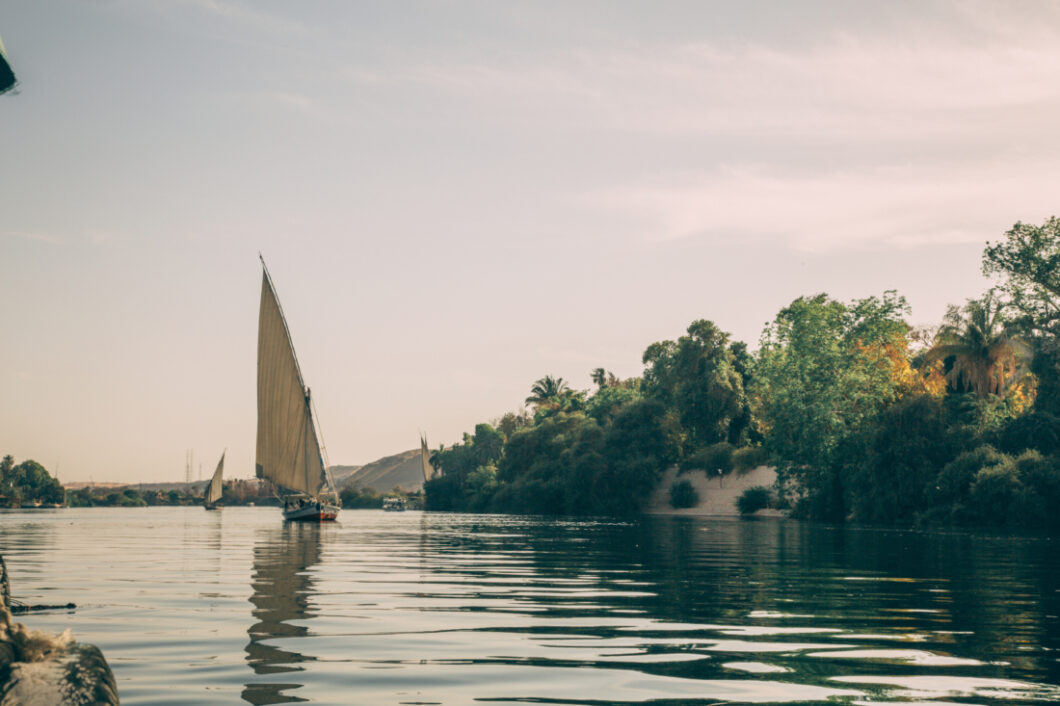
4. Take a Felucca Ride
A felucca is a traditional wooden sailboat. You’ll see them all over the Nile River in Aswan. You can spend days on one or do a sunset cruise on one! They have a single mast, a shallow hull, and a triangular Egyptian cotton sail. Egypt is well-known for producing high-quality cotton.
A felucca ride allows you to travel the Nile without the noise of an engine, allowing you to enjoy the pleasant sound of the wind and the ripples of the river.
A felucca trip can also provide tourists with the opportunity to come up close and personal with Elephantine Island from the river (more on that later!). The felucca tours usually last between 2 and 3 hours.
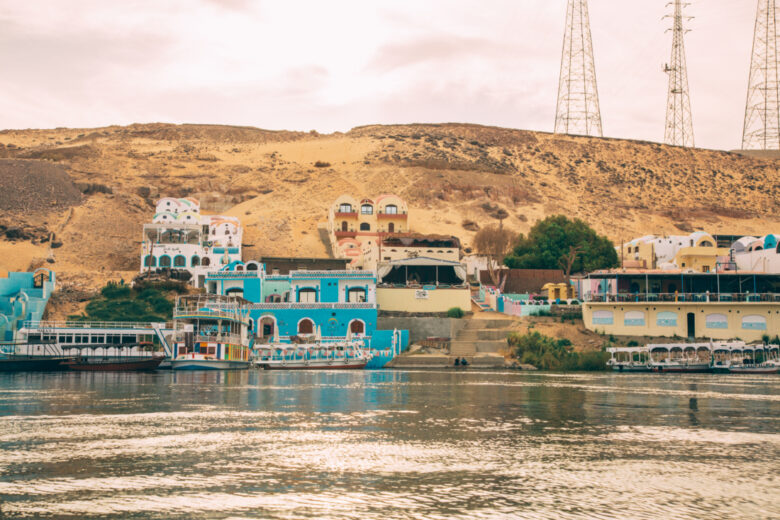
5. Go to the Nubian Village
Another popular tourist attraction in Aswan is to visit the Nubian Village. Nubians are one of the most ancient civilizations in Africa. You can see how the Nubian people live, and they’re beautifully painted homes.
Full disclosure, though – while it was beautiful to see the Nubian Village, I personally didn’t love doing this. There were a lot of different reasons for this, which I discussed in my post about the Nubian Village.
However, many people said it was one of their favorite parts of their trip. So, perhaps I just had a one-off bad experience?
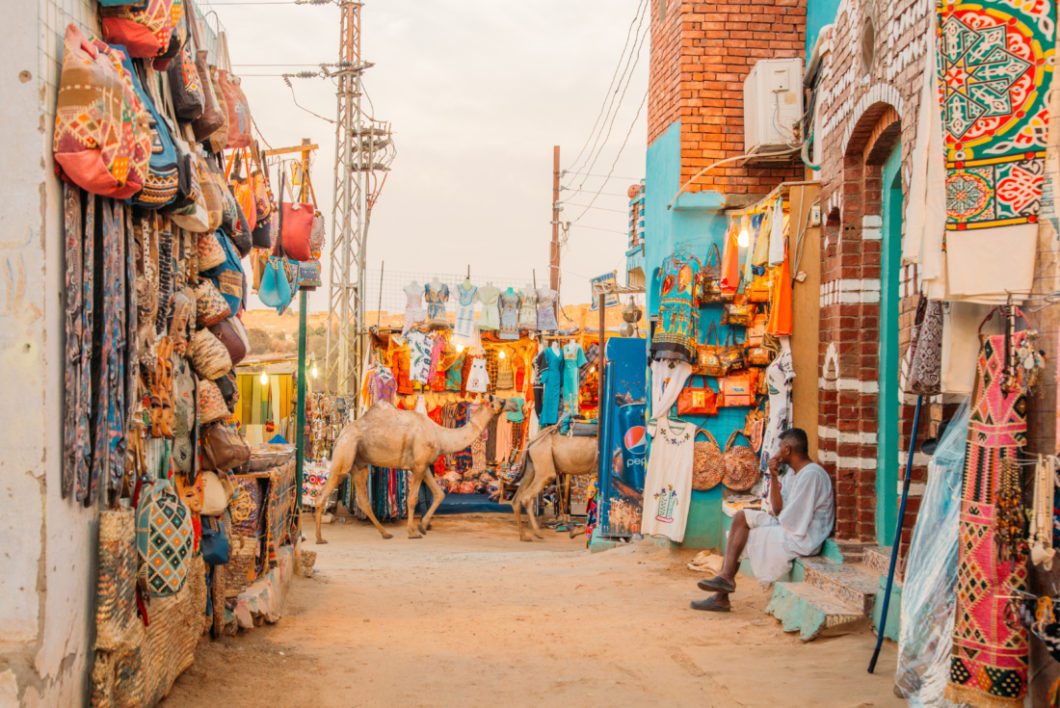
10 Other Incredible Things To Do In Aswan
If you have more time in Aswan, here are 10 other things I would recommend adding to your itinerary:
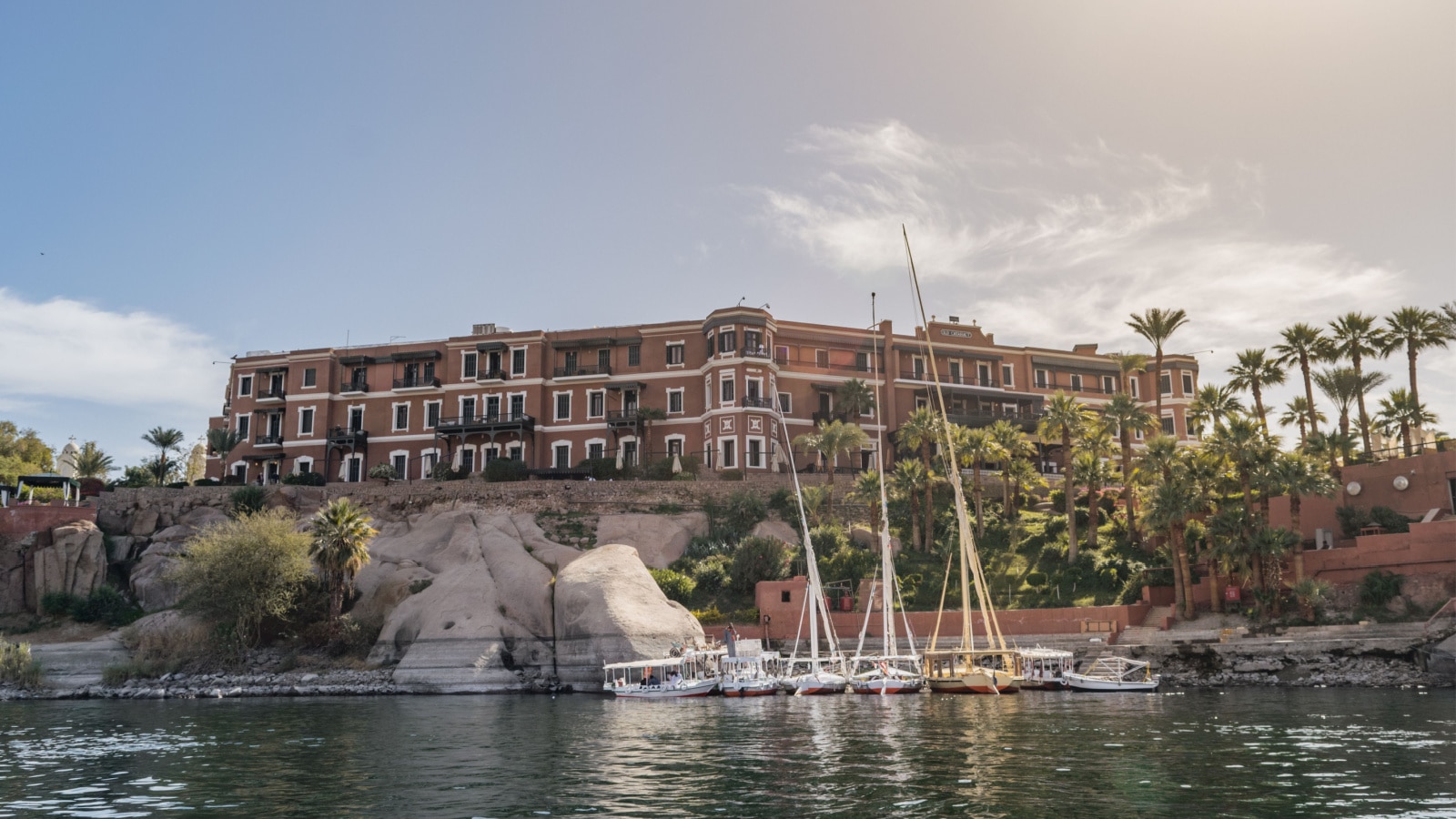
1. Visit the Sofitel Legend Old Cataract Hotel
The Sofitel Old Cataract Hotel in Aswan is a historic 5-star resort. It was completed in 1899, and among those who have visited include Winston Churchill, Margaret Thatcher, Tsar Nicholas II, Jimmy Carter, and Princess Diana, to name a few. While staying here, Agatha Christie wrote parts of her novel Death on the Nile. This hotel was used to film a portion of the film as well.
It’s not the cheapest place to eat for dinner, but if high tea is more your thing, this is the place to go. If your budget allows it, this is the best hotel in Aswan.
You can enter for $75 USD per person if you’re not staying here, but your options for dining will be restricted.
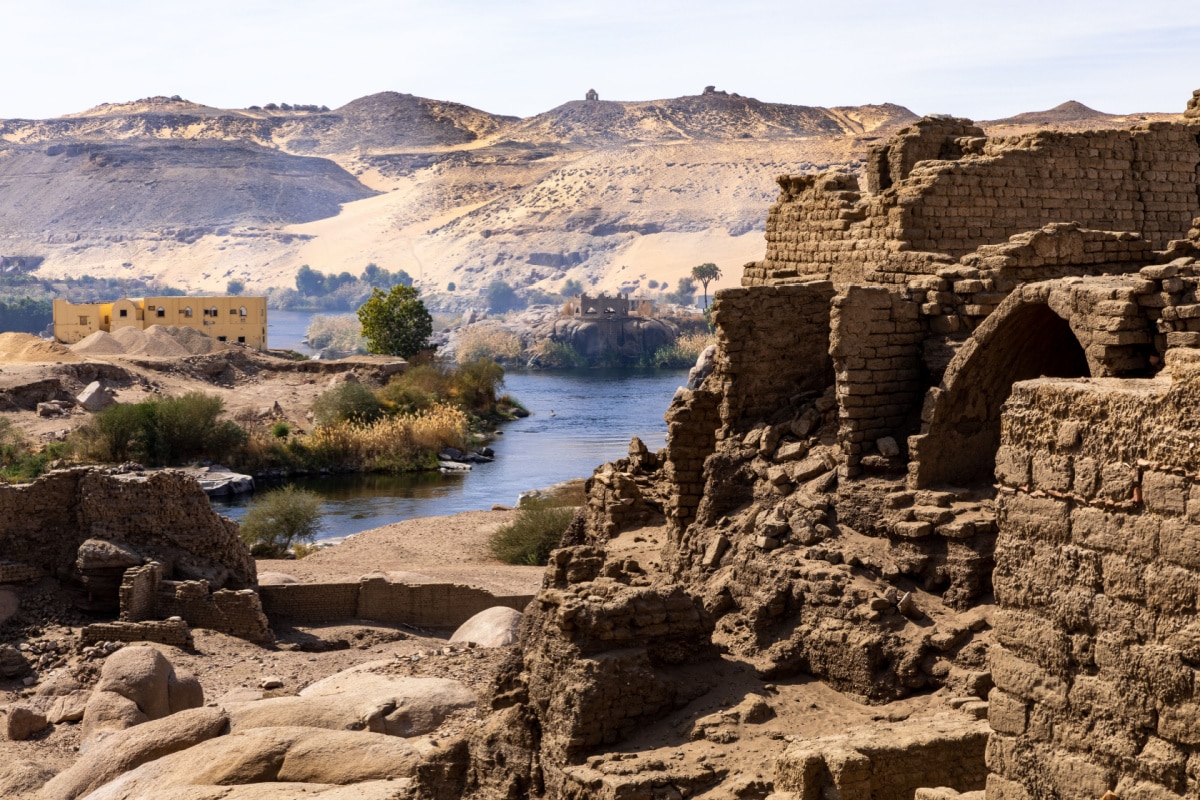
2. Elephantine Island
The Satet Temple Nilometer on Elephantine Island is one of the earliest nilometers in Egypt! It is made up of a staircase corridor that leads down to the river.
Ancient Egyptians thought that Elephantine Island was home to Khnum, a ram-headed god who controlled the rivers. Visitors can wander around the Khnum temple ruins and learn more historical facts from an expert guide!
Elephantine Island has a fascinating and complicated history. Elephantine Island had a Jewish community in the 5th century BC, according to historical records. Learn more fascinating information about the ancient papyri that have been left behind and what they may tell us about Elephantine Island’s history.
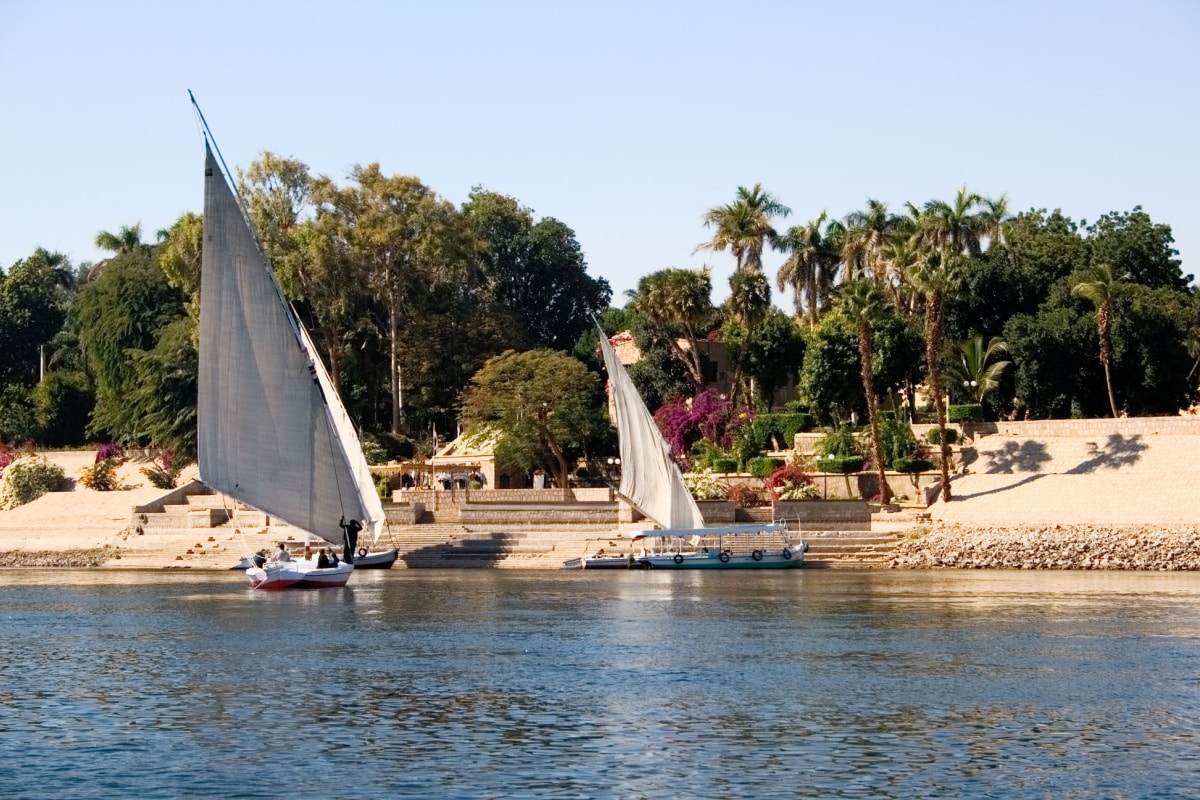
3. Kitchener Island
Another fantastic thing to do in Aswan is to take an inexpensive boat ride from the Corniche to Kitchener Island, which is located just west of Elephantine Island.
Kitchener Island is home to the Temple of the Nobles and the renowned Aswan Botanical Gardens, both of which were created by Lord Kitchener when he was kindly gifted the island in the 1890s!
The Gardens are host to an incredible number of unusual plants that he imported from other parts of Africa and even Asia, including India and the Far East.
This tiny island, also known as El Nabatat Island, is less than 1km long and is incredibly serene. If you’re visiting Aswan during the hot summer months, this is a great place to catch a breeze!
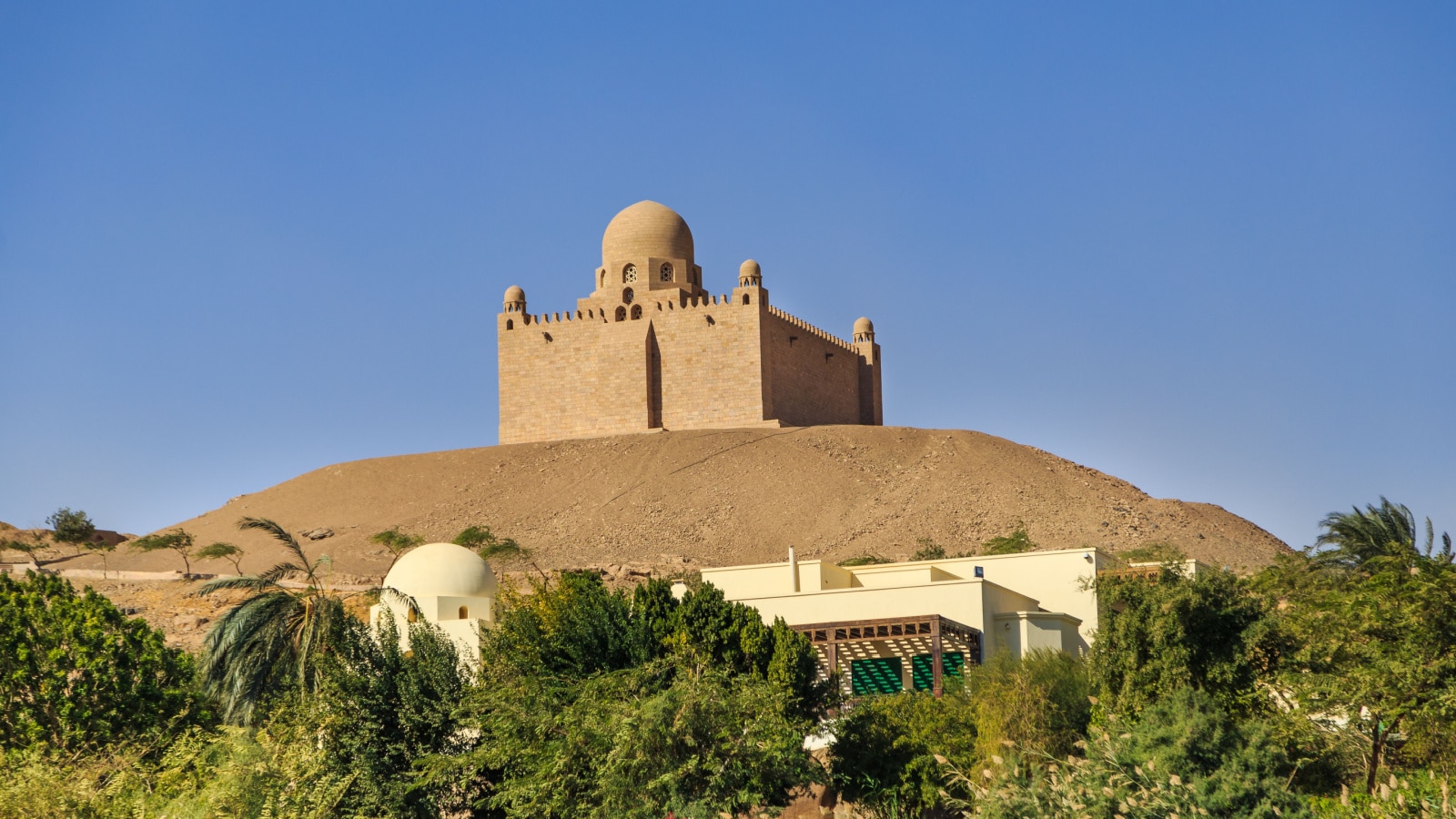
4. The Aga Khan Mausoleum
The Aga Khan Mausoleum can be spotted while exploring the west bank opposite Elephantine Island. Built to contain the remains of Sir Sultan Muhammad Shah, this mausoleum is among the most recently constructed Egyptian landmarks in Aswan.
Aga Khan III died in 1957 and was widely recognized around the world as a kind and charitable man.
Even though tourists aren’t allowed to enter the tomb, it’s hard to miss, thanks to its prominent location on the top of the hill.
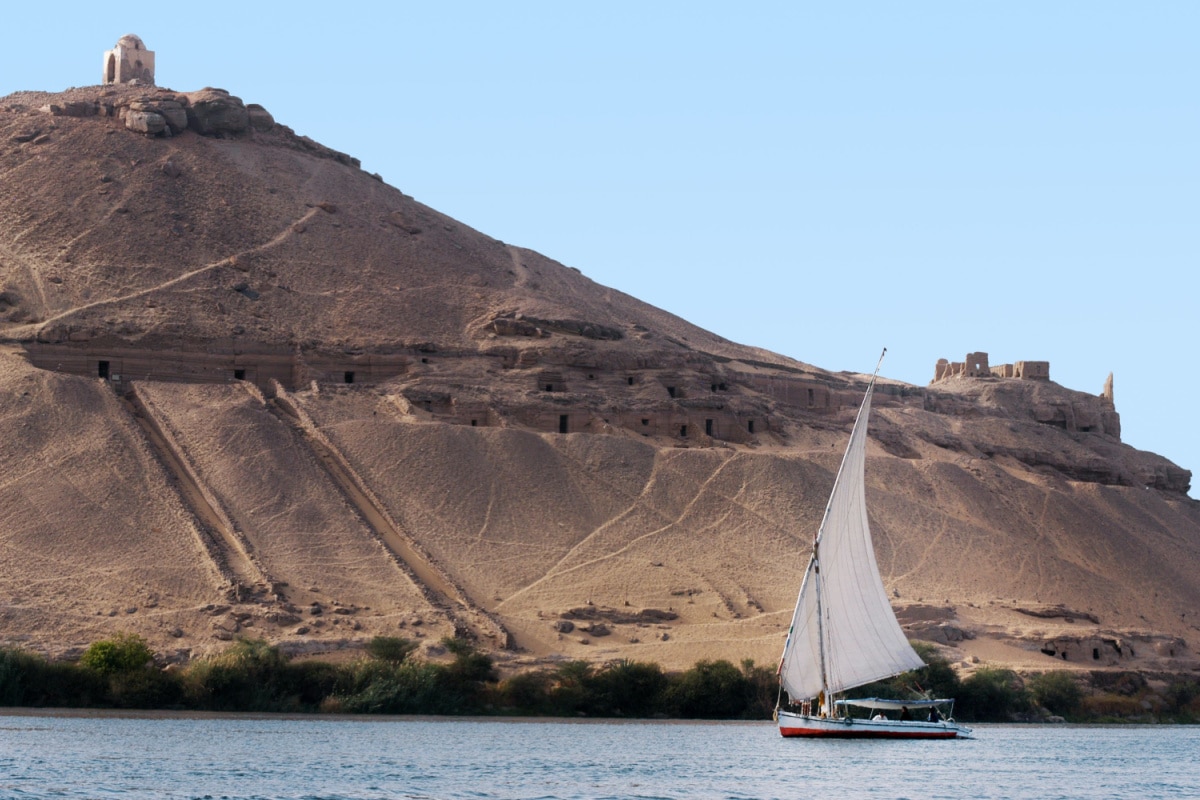
5. Watch the Sunset from Qubbet el-Hawa Mosque
On the west bank of the Nile River, you’ll find the tombs of the nobles. It’s a steep climb to the top, but the view of Aswan from there is stunning.
If you want a unique view of Aswan, then I recommend adding this to your list of things to do while there. You can easily reach there by taking the public ferry from the east bank of the Nile River.
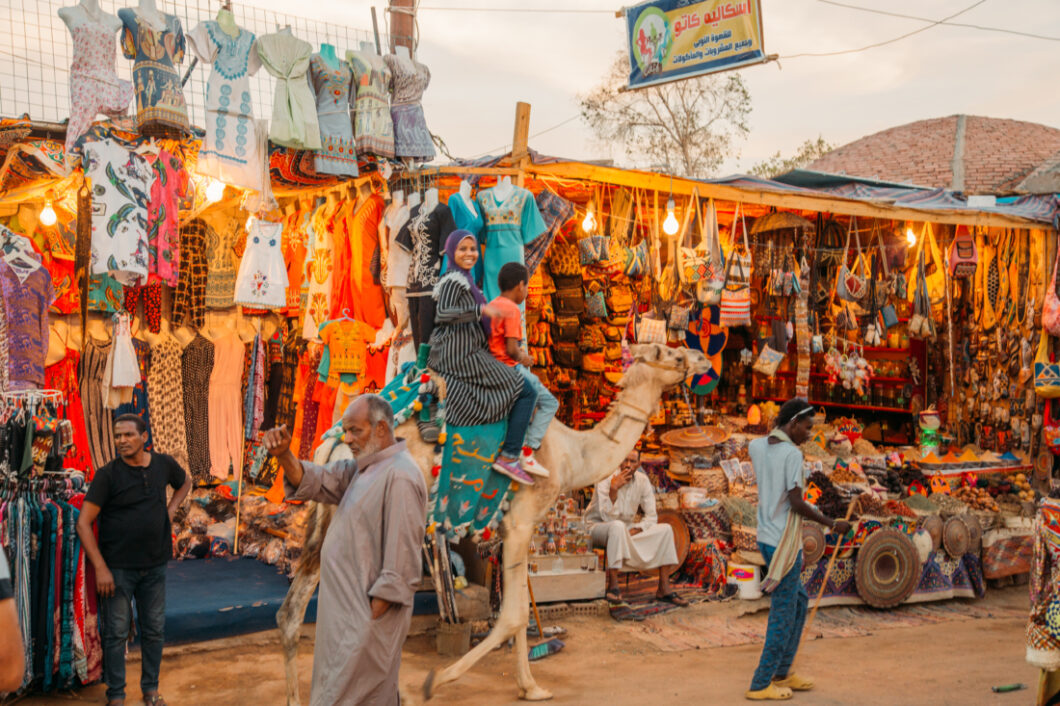
6. Take a Camel Ride
If you haven’t gotten a chance to take a camel ride yet, Aswan is a great place for it. Camel riding has long been a popular means of transportation in Upper Egypt.
Take a half-day journey from Aswan to Daraw, Egypt’s largest and busiest camel market! Observe locals trading camels in big numbers; the market might sometimes have up to 2000 camels. Daraw is conveniently located 18 kilometers north of Aswan.
Other camel-riding itineraries include a visit to the Saint Simeon Monastery. Arriving on camelback adds to the adventure as you ascend the rocky desert dunes in an authentic and traditional way.
You can even ask your guide or hotel to arrange a sunset camel ride in the surrounding hillsides on the West side of the Nile River for a shorter trip.
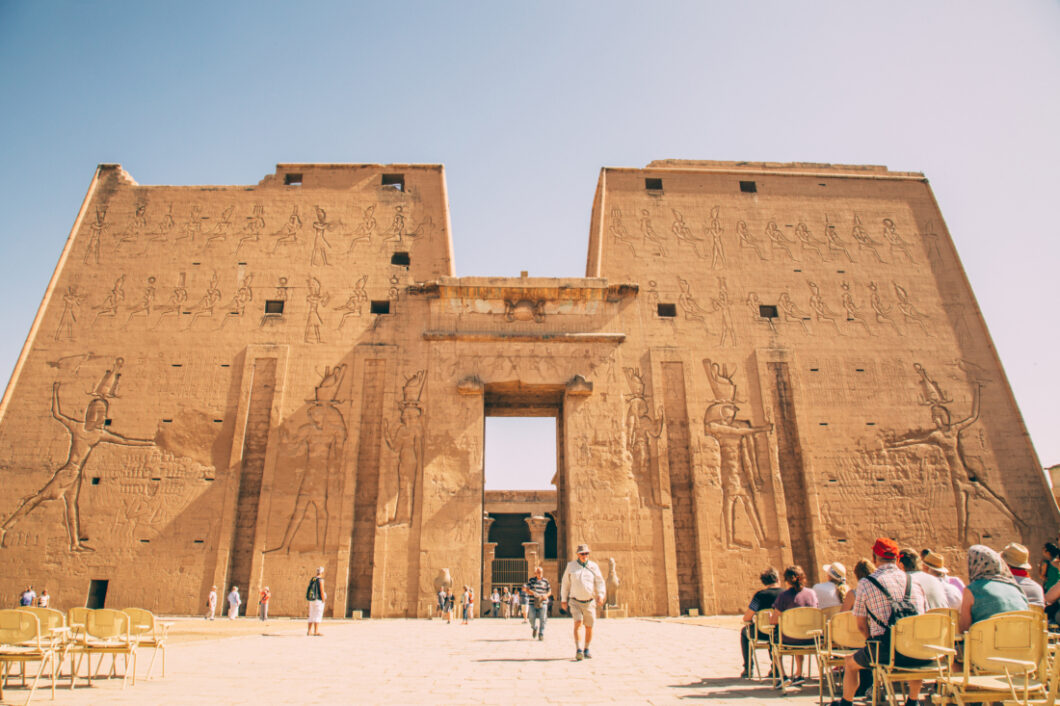
7. Visit the Temple of Kom Ombo and Edfu
The Temple of Kom Ombo is a double temple built for two distinct gods. One side of the complex is dedicated to Sobek, the crocodile god linked with the fertility of the land along the Nile River. Horus, the falcon-headed god, is honored in the other half.
The Temple of Edfu is the largest temple dedicated to Horus. It was constructed between 237 and 57 BC during the Ptolemaic Kingdom.
Kom Ombo is 60 kilometers north of Aswan. It takes one hour to reach here by car.
Edfu is located 64 kilometers north of Kom Ombo and 124 kilometers north of Aswan. You can go to Kom Ombo by itself, or you can take a day trip from Aswan to both Edfu and Kom Ombo. This usually takes between 9 and 10 hours.
If you want to take a Nile cruise, you should include visits to Kom Ombo and Edfu in your itinerary since you’ll be stopping their during the cruise. However, if you have no plans to cruise the Nile River or drive between Aswan and Luxor and want to see more temples, this day trip is worth adding to your itinerary.
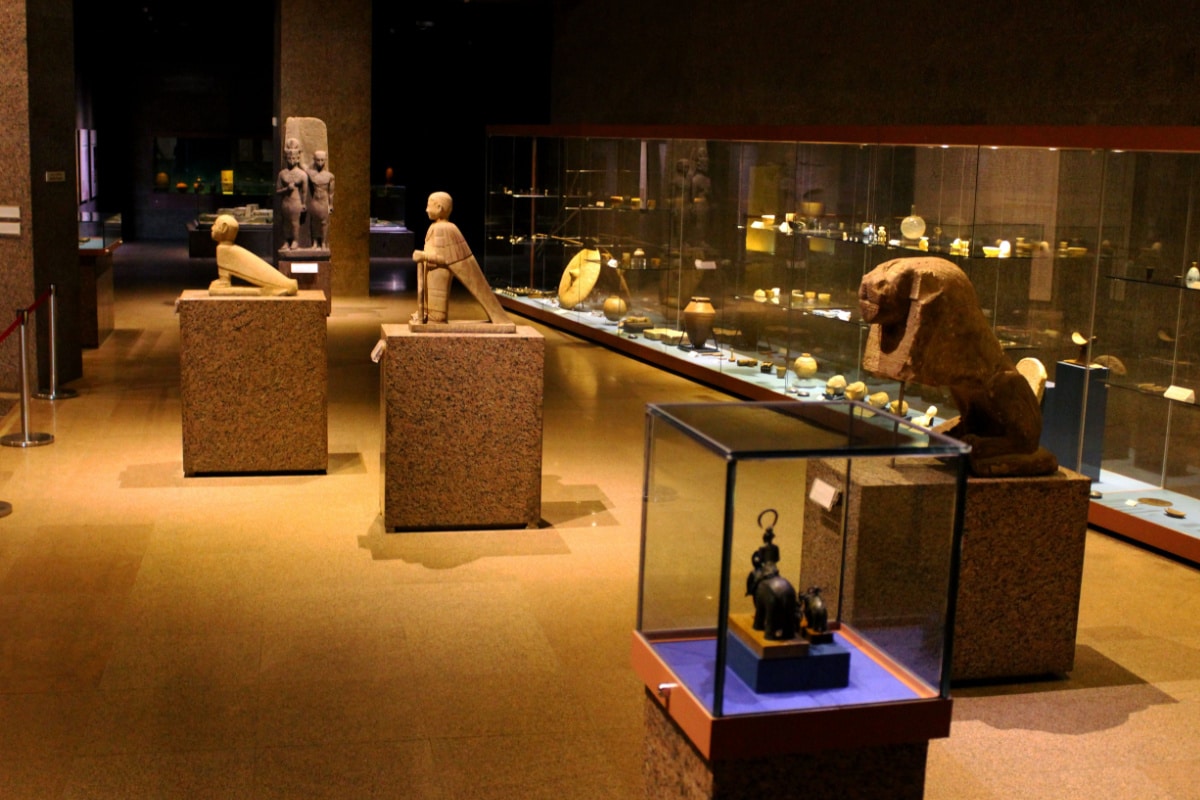
8. Visit the Nubian Museum
The Nubian Museum is regarded as one of the best in Egypt, and although I did not get to visit this museum, I highly recommend you do if you get the chance.
It’s a must-see for anyone interested in Nubia’s history and culture. It records the riches of a culture that was nearly wiped away with the construction of the Aswan Dam and the formation of Lake Nasser.
There is a great collection of artifacts from the Kingdom of Kush, which was in ancient Nubia. There are also many beautiful black-and-white photos of UNESCO’s amazing project to save Philae Temple and Abu Simbel from the rising waters of the dam, as well as many photos of the many other monuments that are now lost forever under the lake.
The museum’s collection includes a statue of Ramses II, a statue of Amenras, the Shpatka’s head, and the black granite head of Tahraqa.
In addition to a comprehensive history of Nubia and its people, the ethnographic section showcases beautiful folk art and handicrafts from Nubia.
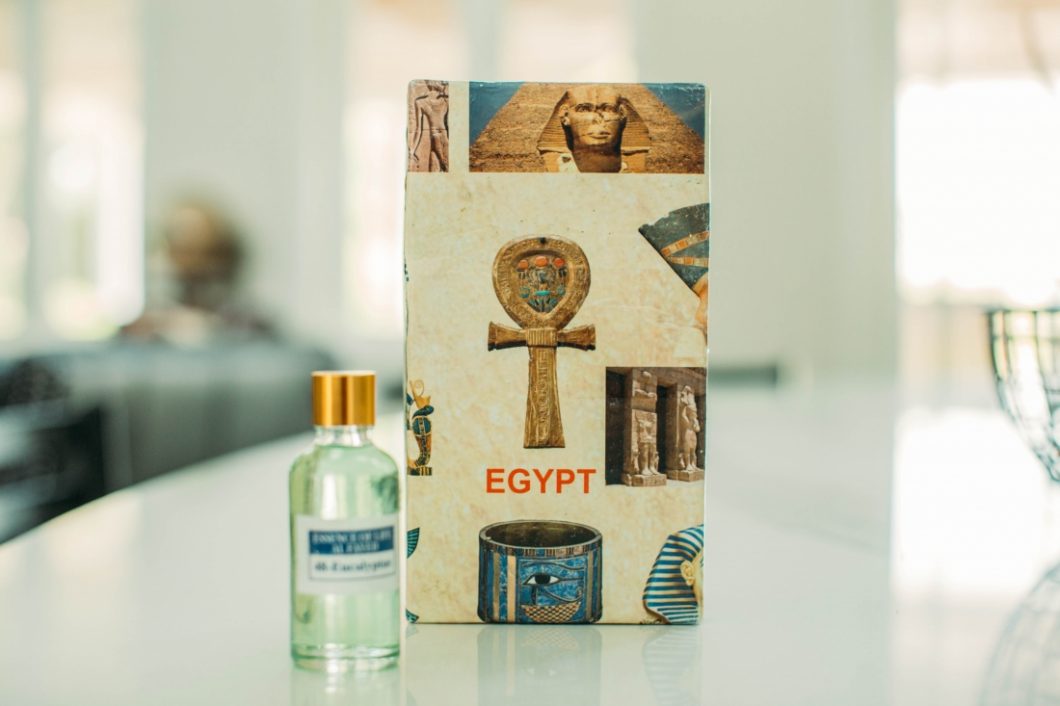
9. Go to an Essential Oil Factory
Aswan is also a popular location for making essential oils. There is plenty of evidence that the Ancient Egyptians had been using essential oils thousands of years ago too.
This is a rather touristic stop (and not a must-do by any means), but you can get some great deals on oils. I, personally, bought a bottle of mint because my allergies were flaring up, and it offered some relief.
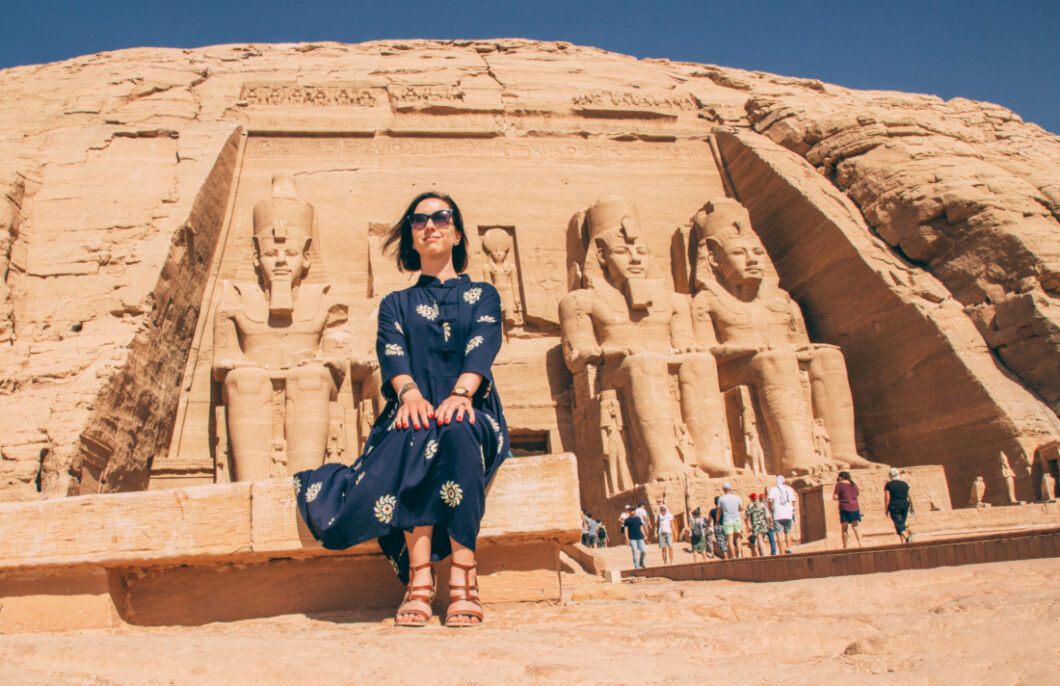
10. Day Trip to Abu Simbel Temples
Abu Simbel is over a 3-hour drive away from Aswan. So, it’s not actually something to do “in” Aswan, but many trips leave from Aswan.)
It is an absolute must-do if you’re in Egypt, though! The temple complex is one of the most impressive sights in Egypt, so plan your trip accordingly.
You can check out my entire post on Abu Simbel. However, honestly, I would skip everything mentioned in this post if it meant I could see Abu Simbel – it’s that awesome!
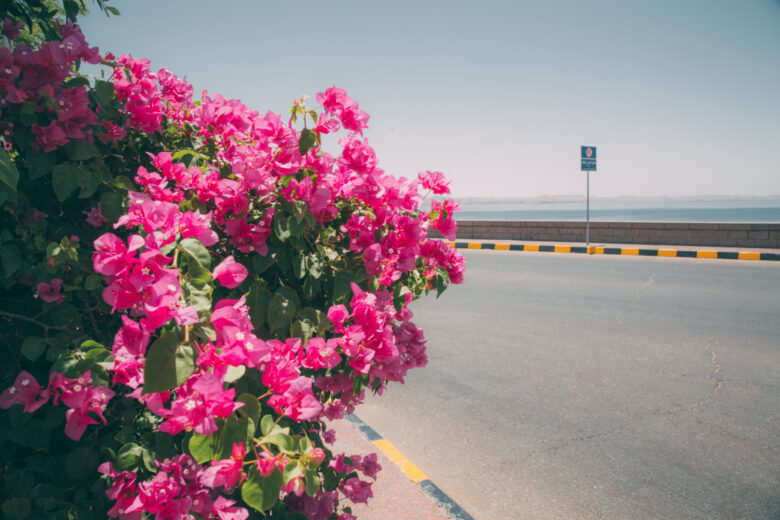
Which of these best things to do in Aswan sounds the most interesting to you? Let me know in the comments!
If you’re headed to Egypt, you might want to read all my posts on Egypt to learn everything you need to know about this stunning country before you travel there!
You can also check out my entire packing list for Egypt as a woman or see my itinerary for how to spend 7 days in Egypt!


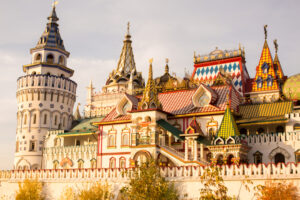
I love everything Egypt and have been twice. I agree with all your recommendations, although, I did not visit a Nubian village. I flew to Abu Simbel. It was so worth the trip – one not to be missed. I can understand why you would do a whole post on it and look forward to reading it.
Thank you so much for reading, Joanna. Abu Simbel was the highlight of my trip to Egypt. It’s so incredible to see.
Cool post 🙂 I’d love to go to Egypt one day.
Thank you! I hope you make it one day!